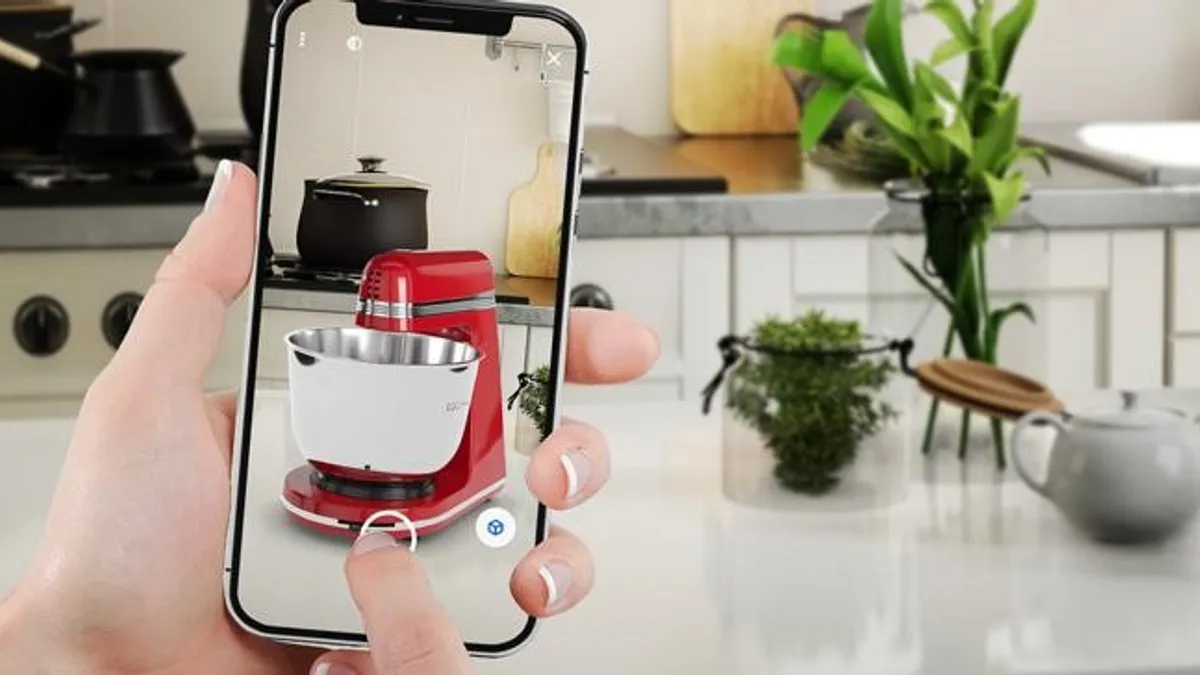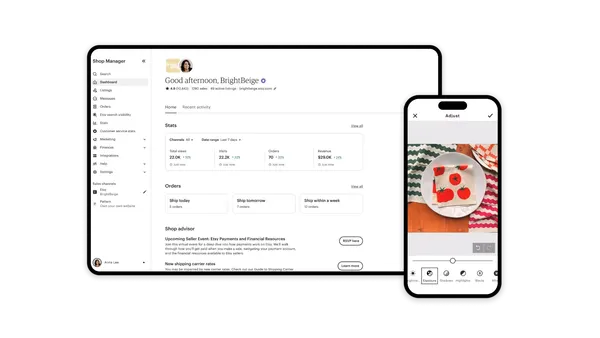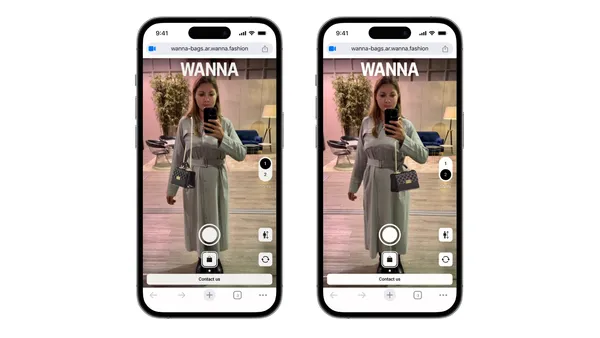The commercial potential of augmented reality (AR) technology is arguably the hottest topic in retail right now. As the Covid-19 pandemic accelerated the shift towards online shopping, AR technology emerged as one of the most promising tools in eCommerce. By allowing customers to see and test products from their homes, AR helps people shop online with greater confidence and is redefining the shopping experience as we know it.
Brands like IKEA and Nike were among the first to introduce AR technology into their marketing and eCommerce strategies only just a few years ago. Now, many more well-known brands have been making AR essential to their customer experience. This includes businesses like Home Depot, H&M, and Sephora.
Customers are starting to expect the convenience of view-in-room and try-before-you-buy, both AR technologies from the comfort of your home. A key indicator of that change in behavior is the fast-growing number of AR users. According to recent data by Statista, the number of mobile AR users worldwide will reach 2.4 billion by 2023, with over 95 million users in the US alone by next year.
There is no doubt the opportunity for retailers to adopt AR is huge, but many have no idea where to begin, or how to efficiently produce AR-ready content at scale. Having already converted tens of thousands of products into digital assets, leading 3D and AR content provider ARsenal shares its top 5 takeaways on how to get started in the retail sector.
1. Define the use case when requesting 3D models

Not to be confused with virtual reality (VR), AR is the ability to visualize or overlay 3D models, videos, or information onto reality. And although 3D is the basis of any and every AR experience, AR is only one of several different use cases for 3D models. So to introduce AR in retail, you first need AR-compatible digital content.
2. Test proof of concept before scaling up

When making the transition to 3D and AR, it's recommended to start with a small batch of a handful of products first, rather than trying to implement everything overnight. This is true for companies of all sizes but even more important as the number of products increase.
Starting small can mean different things to different businesses, but some examples include starting out with a single product category like dining, selecting a batch of bestsellers, or starting with a specific or seasonal product edit.
Getting started with a test batch is easy, it's scaling up that requires more preparation. That's when companies can begin to understand the timescales involved and the processes they need in order to convert at scale.
3. Streamline the QA process to handle expected volume

High-quality 3D models depend not only on skilled 3D designers but also on the quality of reference images provided. Here, retailers often face a mixed bag when it comes to the images provided by suppliers, making the quality and availability of reference material a key consideration when transitioning to 3D and AR at scale.
Once a 3D model is produced, it has to be reviewed internally usually by a marketing or brand manager, product designer, or 3D manager for quality. This can either be done by a dedicated resource on the client-side, outsourced, or as part of an integration with client systems so that as the volume of models being delivered for QA increases, a process is in place that can handle the scale.
4. Choose the right 3D partner to guide you through all the steps

Contrary to what many think, retailers don't need to have any 3D expertise at all in order to get started with AR. Only when scaling up should brands contemplate having 3D expertise in-house in order to assist with handling the flow and processing of thousands of products. At that stage, a dedicated in-house resource can be the most effective way to ensure quality and continuity as the technology and 3D partnership evolves.
The right 3D partner can guide you through the process and provide a low barrier to entry. At ARsenal, customers are offered a complete solution with service that includes everything from ordering models, to conducting QA and providing AR-ready embeddable links, and all straight from within the free digital asset management platform (DAM).
5. Save money by replacing photography with 3D models

As mentioned previously, you need 3D models in order to use AR, but once you create those models, they have a full range of use. Compared to photography, which quickly becomes stale, 3D models can be reused to create infinite product shots, edited and optimized, and they can be swapped in and out of different seasonal lifestyle scenes, or used in interactive viewers, spinners, room planners, and more.
By replacing product photography with 3D models and renders, US retailers can save up to nine times on the cost of creating product visuals, according to a recent study. Hence why almost every major tech corporation is now betting big on the shift towards commercial AR. The most recent example would be Facebook's rebrand to Meta, while everyone else, from Microsoft and Apple to Google and Amazon, has also announced significant investment plans to build out the next generation of AR capabilities.
Remember, augmented reality technology is not exclusive to the bigger players. In fact, it's now more affordable and cost-effective than ever to use 3D in product visualization. And with prices per model starting below $100 USD, that's definitely within the range of most retailers' budgets.










